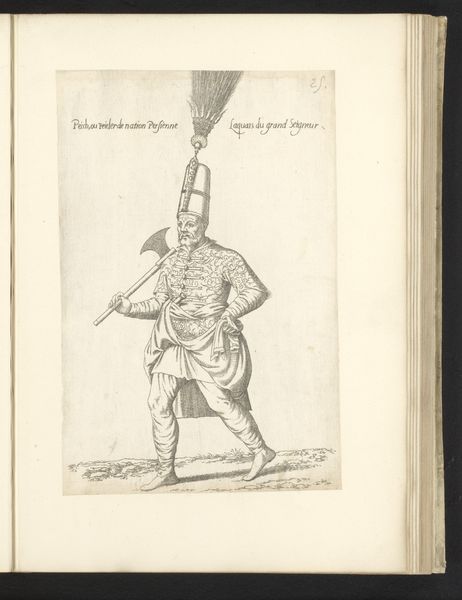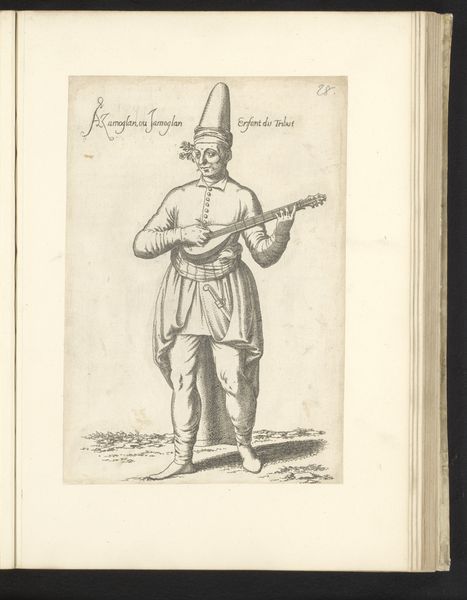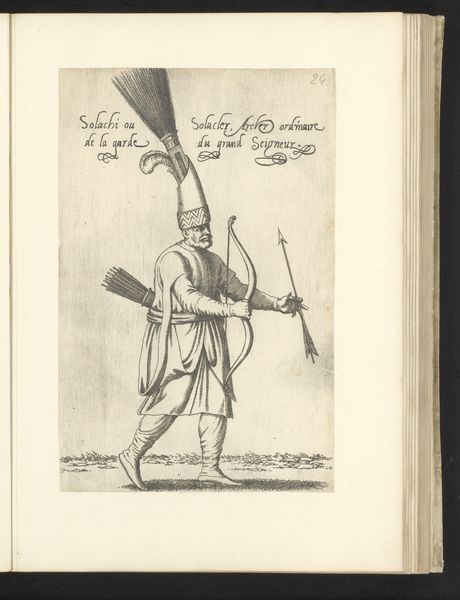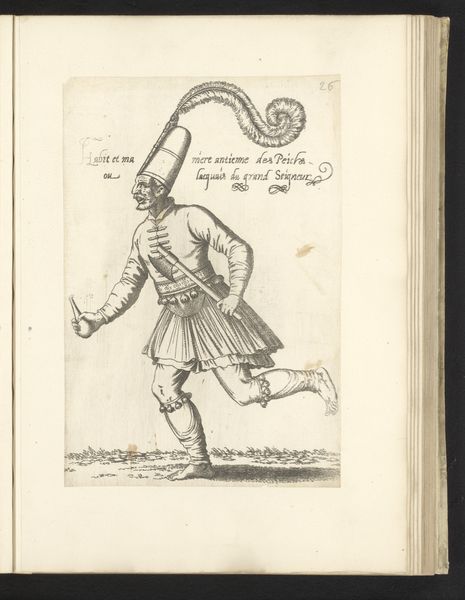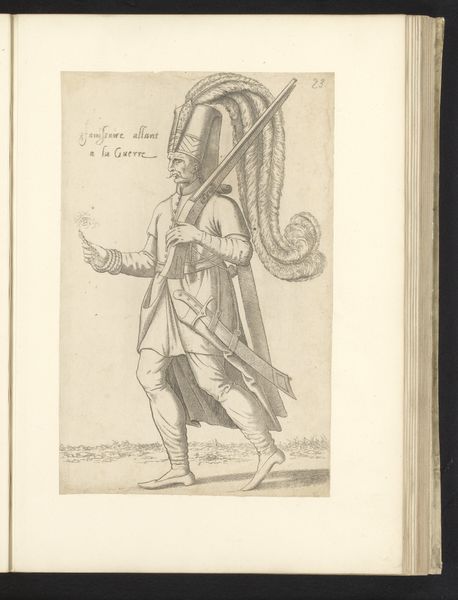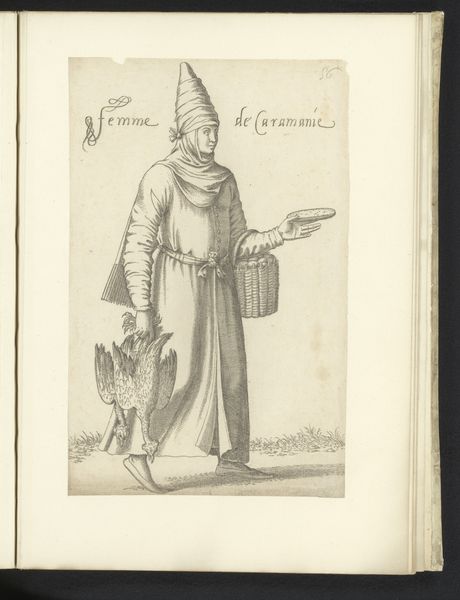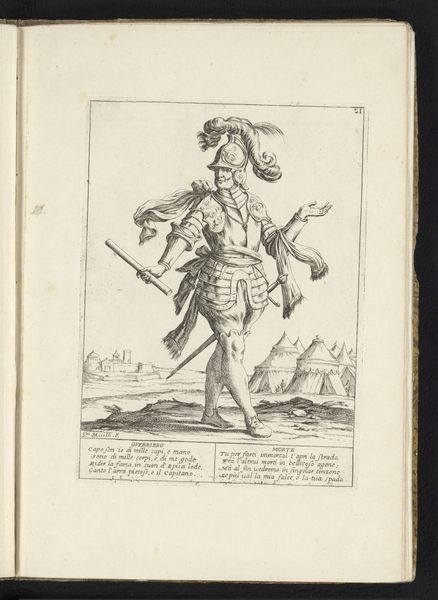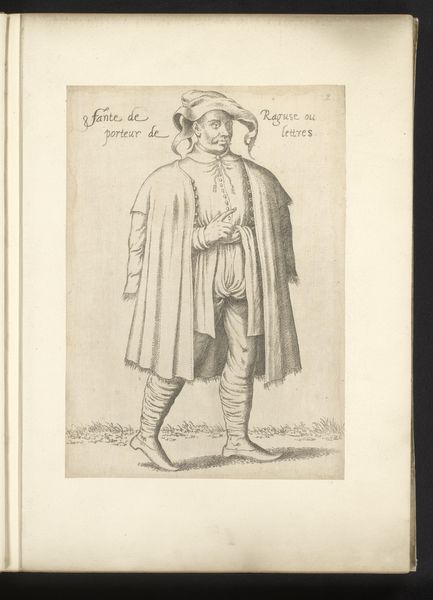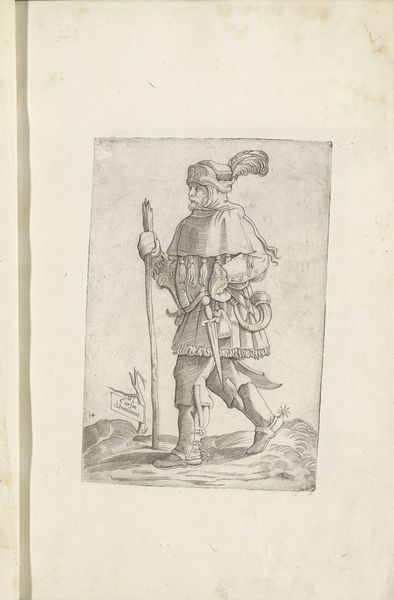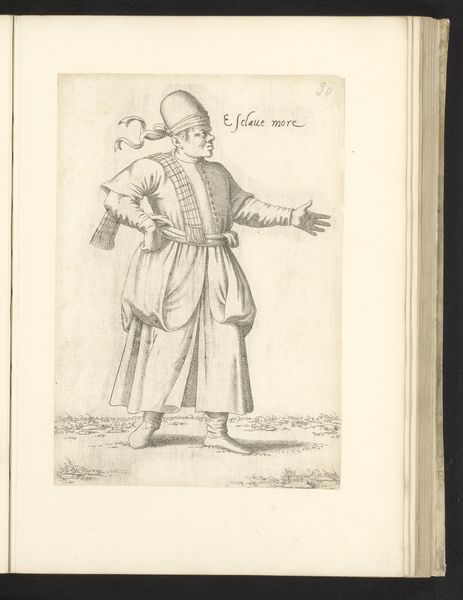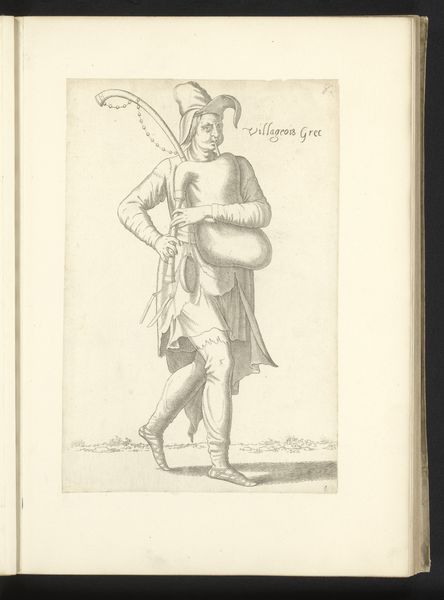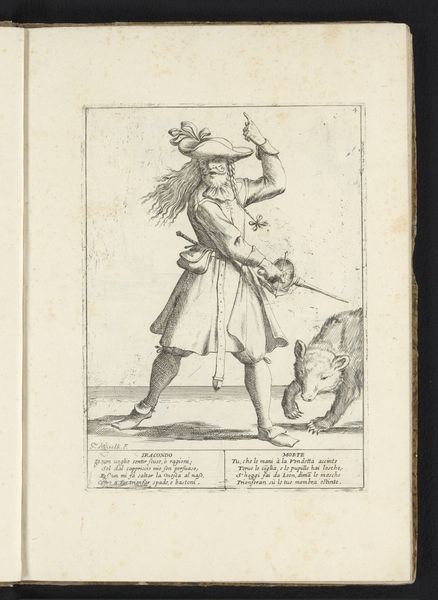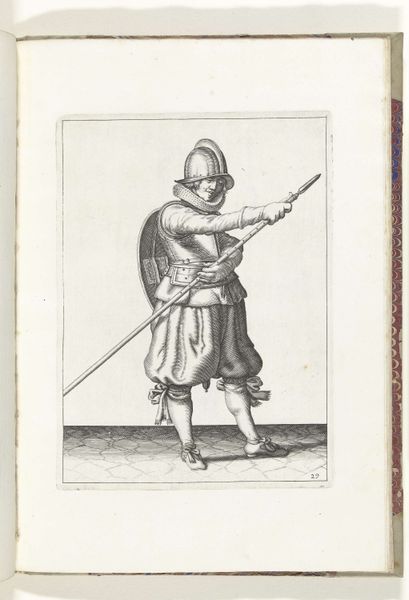
#
imaginative character sketch
#
mechanical pen drawing
#
sketch book
#
personal sketchbook
#
ink drawing experimentation
#
pen-ink sketch
#
pen work
#
sketchbook drawing
#
storyboard and sketchbook work
#
sketchbook art
Dimensions: height 256 mm, width 173 mm
Copyright: Rijks Museum: Open Domain
Curator: Let's spend a moment reflecting on Léon Davent’s ‘Azamoglan’ of ‘Jamoglan’, dating from around 1555 to 1568. It appears to be an ink drawing, part of a sketchbook page. What's your initial response to this image? Editor: Well, right away I'm struck by the figure's pose. There's something performative, almost theatrical, in his stride. I wonder what kind of story this figure could be telling? Is this documentation or creative illustration? Curator: Exactly, that ambiguity is part of what intrigues me. "Azamoglan", of course, refers to a young male servant in the Ottoman Empire, often taken as tribute. Notice his conical hat, quite symbolic of his rank and origins, setting him apart. Editor: That context is key. This isn't just some anonymous sketch; it's a record, perhaps filtered through a European lens, of power dynamics and the complex relationships between the Ottoman and European worlds. There’s a sense of imposed exoticism, how he’s marked as "other". Curator: Precisely. And Davent, known for his engravings after the School of Fontainebleau, often imbued his figures with a certain artificiality, a self-conscious elegance. Look at the delicate rendering of his clothing, almost more attention is given to detail than anatomical precision. Editor: I’m curious, looking at those bulbous leggings, whether this stylization reflects a European misunderstanding – a flattening of diverse cultures into a singular, somewhat caricatured, image. Curator: That's entirely possible, which invites us to analyze his depiction not just as portraiture but as a symbolic representation of cultural tensions. Consider that a servant could have been from a place that wasn't of turkish descent, the clothes in his country being another reason for the characterization, Editor: Ultimately, what we're seeing is an intricate web of identity and representation, complicated further by the artist's positionality. Thank you for opening that portal to understanding. Curator: Indeed. Hopefully this journey through symbolism encourages visitors to question their own gaze.
Comments
No comments
Be the first to comment and join the conversation on the ultimate creative platform.
